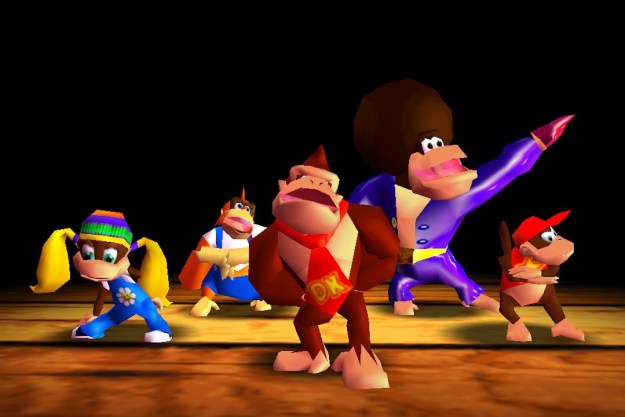Over the course of the pandemic, people have flocked to their creature comforts, and sometimes, that means retro games. Similarly, some have taken the opportunity to create new things for retro gaming platforms or using peripherals. That includes the Game Boy Camera.
The piece of tech, a 0.001-megapixel camera that attaches to a Game Boy by slotting into it like any regular game, has had a resurgence as of late. Pictures people have taken with the peripheral appear frequently across Twitter or other social feeds.
Zoë F. Wolfe is one such artist, although they’re not specifically a Game Boy artist. Instead, they’ve taken the medium and transformed it using a mix of their own hobbies, including glitch art. The resulting pieces of work are unlike anything else produced using a Game Boy Camera; highly edited pieces of art that combine the peripheral’s low fidelity with strange, and sometimes macabre imagery.

The right Game Boy for the job
Wolfe, like so many others during the pandemic, got back into retro games over the course of their own lockdown. “I was having a good depression period, watching a lot of gaming YouTube,” Wolfe tells Digital Trends. They eventually got their own Game Boy and quickly found an interest in Game Boy modding, all because they wanted to play Metroid Fusion and Metroid: Zero Mission.
The walls of Wolfe’s studio are lined with art, although one is dominated by a shelf of Game Boy consoles, all sporting after-market mods. Some have new IPS backlit screens, others sport custom shells. Wolfe’s Game Boy Advance that’s used specifically for filming has two crucial mods: an overclock that lets it film at higher frame rates and a built-in HDMI output. However, it’s one of the least visually striking of their numerous handheld consoles.

Some of their Game Boy consoles have the camera slotted in, although its regular 0.001-megapixel camera’s lens is replaced with something that looks like it belongs on a modern DSLR camera. High-end lenses that allow for more zoom, along with a Super Nintendo Entertainment System with its own HDMI input make some of Wolfe’s stranger works possible.
Where other photographers would take high-end cameras, Wolfe would bring their Game Boy Camera. “I went to an artist meetup at a zoo, and I brought my Game Boy Camera. I took a whole 30 photos on it, which is all it fits. I was the weird person hanging over the edge with a modded Game Boy,” Wolfe says. Using the old camera peripheral was the perfect way to get into making pixel art, as those images can then be put onto a computer by using a cart dumper and then edited in a piece of software called Aseprite.

However, in the back of Wolfe’s studio is more equipment that seems totally unrelated to pixel art or Game Boy Cameras. They own an indie band’s worth of guitar pedals, along with a suite of old RCA converters, all of which aren’t high-end. “I try to run on cheap gear,” said Wolfe. “Everything here is used or it’s the most basic thing you can get on Amazon.”
It’s a seemingly random horde of equipment that feeds straight into their preferred form of art: glitch.
Glitched out
There’s a solid chance you’ve never heard of glitch art, and nobody could really blame you. It’s an extremely niche genre of digital art, one that Wolfe experiments with even further by making it analog.
Glitch art, simply put, is art made by using a piece of technology for an unintended purpose. For some, that might mean putting an image on a CRT television, holding a magnet up to the screen, and taking a picture of whatever resultant image there is. Glitch art, in all its forms, is made by causing an “error” on a display. For Wolfe, those images always come from a Game Boy Camera, and the edits made to it are almost always analog.
“I can’t draw, but I can certainly plug things into each other.”
“I always wanted to do analog glitch,” said Wolfe, “so one day I looked on eBay for whatever CRT was closest to me and just got it. The same day I got a ton of VHS tapes from the thrift store, and it snowballed from there.” They started by simply unplugging the video cable from the TV, but eventually found that by using a headphone splitter, they could change the image even more by simply turning the volume knob.
This led to Wolfe’s collection of guitar pedals and other old audio interfaces, cables, and connectors. Using these tools, they could make an image change with audio, which they eventually began applying to the photos they took using the Game Boy Camera. After our interview, Wolfe posted videos to Twitter showing the effect at work. Using a drum machine, they warped and glitched an image in real time, creating something entirely new.
Sharing some test footage of this setup because honestly I'm too jazzed about it to keep it to myself:@Akai_Pro Rhythm Wolf +
A sick @mxmorggo wolf +
A @glitch_wolfe (me!) pic.twitter.com/Jwo9sk7D8Z— zøë wolfe (@glitch_wolfe) January 20, 2022
Other photographers use their Game Boy Cameras to capture singular moments, preserving them in green and black pixel art. Wolfe’s use of the peripheral takes that same concept and moves it forward by leaps and bounds. They make gifs by stitching together 30 images of a spinning subject, like a skull or Furby, and videos by connecting a Game Boy Camera to a SNES and then to their laptop, which is running OBS.
“I’m mixing art with the Game Boy Camera that really, nobody else is,” Wolfe says. “Like, no one is using this thing to photograph things the way I do, and cleaning them up. Not a lot of people tend to make gifs, but they don’t specifically take multiple frames intentionally and make something new.” Because of the spin that they put on Game Boy Camera photography, Wolfe’s art ended up in a gallery put together by Cat Graffam that exists on a Game Boy ROM.
Despite their innovations in the style, Wolfe doesn’t want to be designated as a Game Boy Camera artist, photographer, or pioneer in that field. “I don’t like to pin myself down,” says Wolfe. “I don’t want to brand myself as a Game Boy Camera person, but what I care more about are the tools I use to get the results I care about. I’m just merging all of my hobbies into one disparate style. I’ve got modded hardware, glitch art, live video on a CRT, and I play my music through this too. I’m teaching myself music production.”
“It’s all part of my way of making digital art, because I can’t draw, but I can certainly plug things into each other.”
Editors' Recommendations
- World of Goo 2 might just be the Nintendo Switch’s next must-own co-op game
- Turnip Boy Robs a Bank is a hilarious chaser to January’s serious games
- Super Meat Boy’s puzzle game spinoff already has me cursing its creators
- Xbox Game Pass adds a little and loses a lot this month
- 6 Game Boy Advance games that should head to Switch Online




